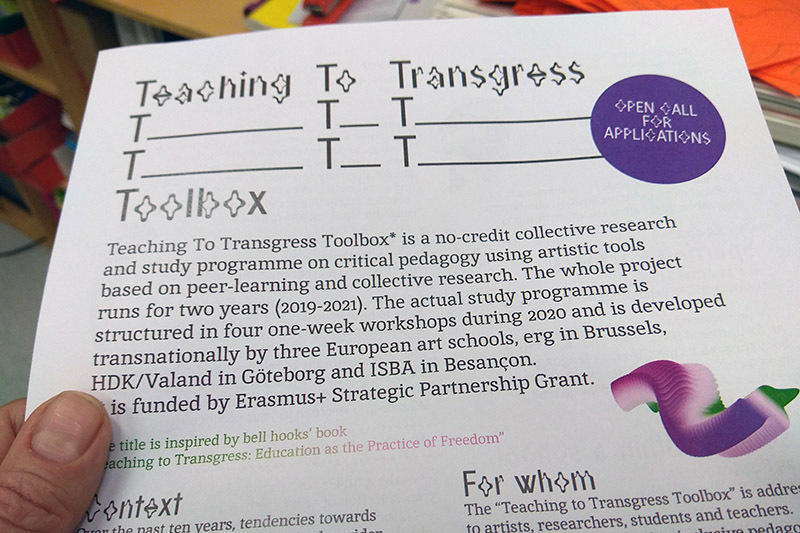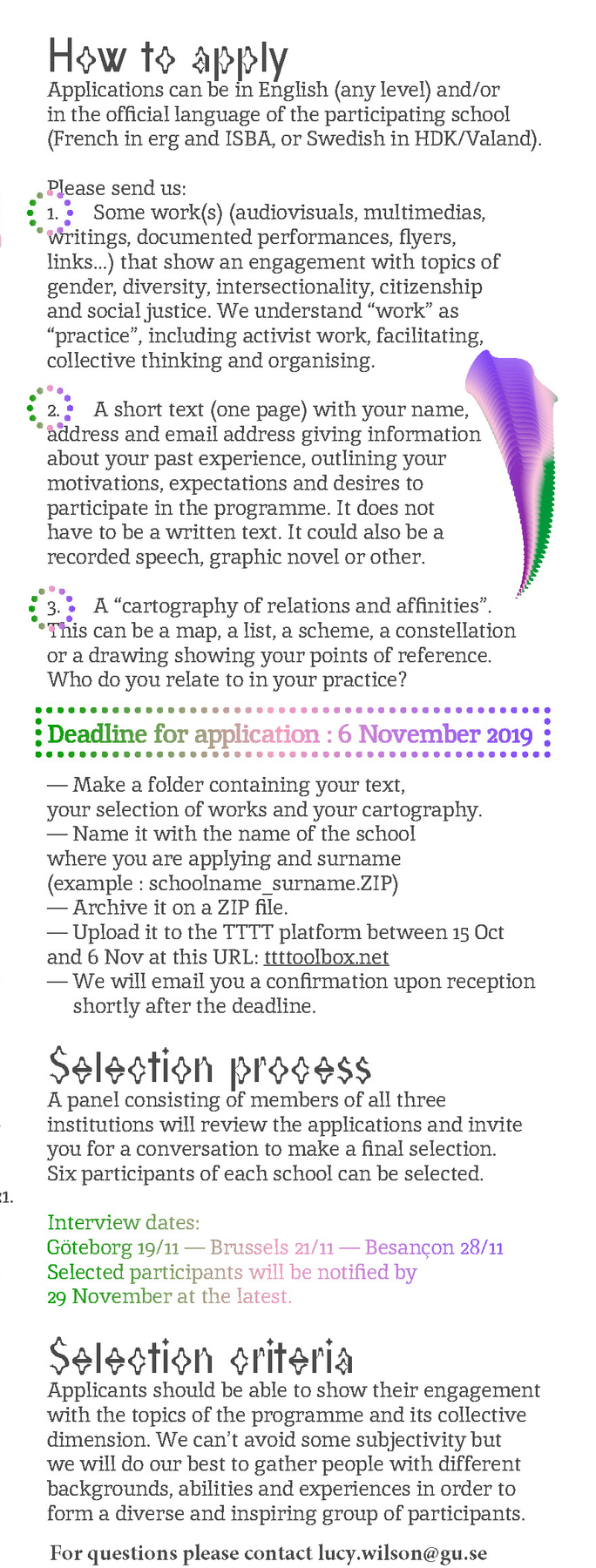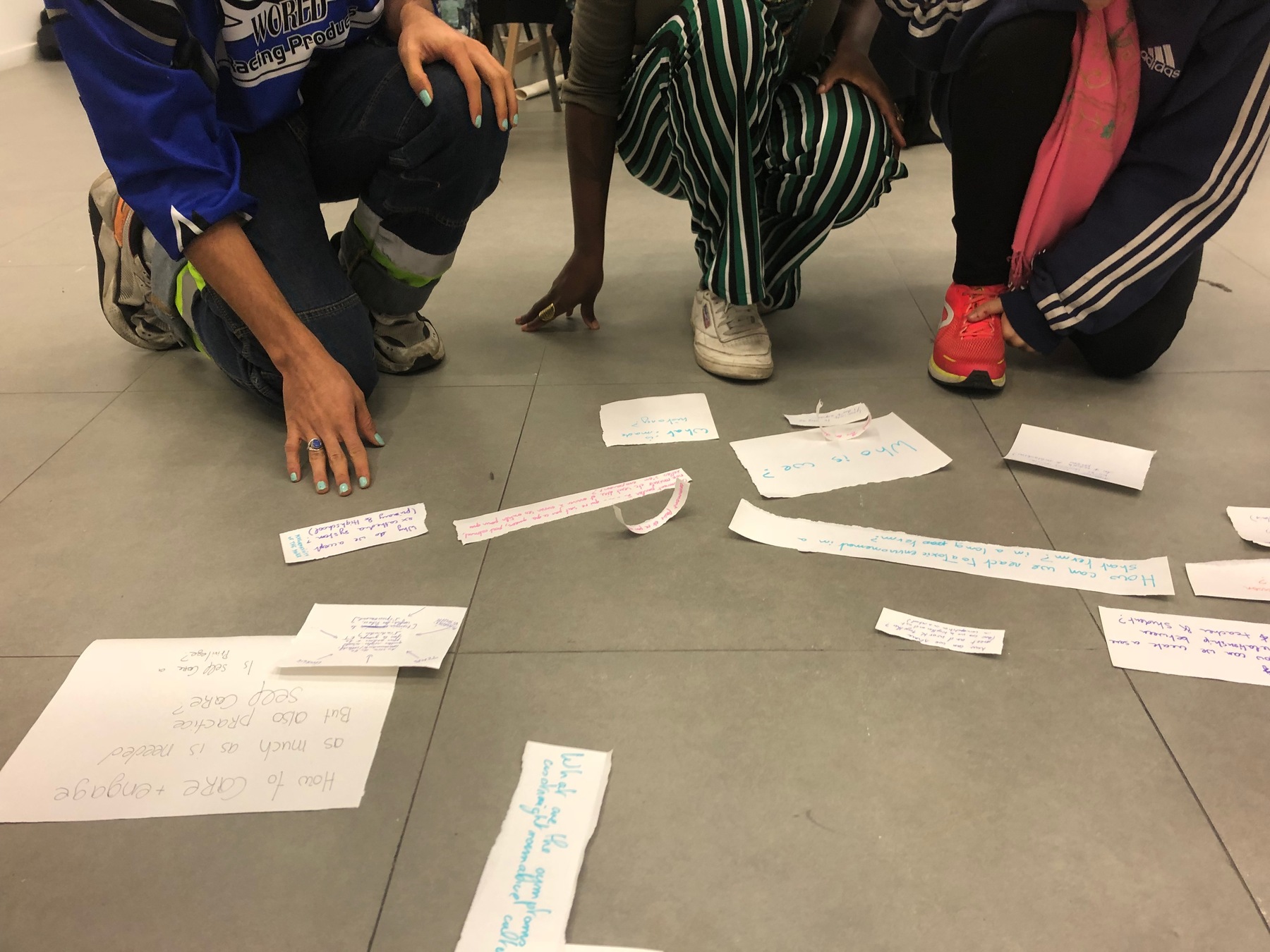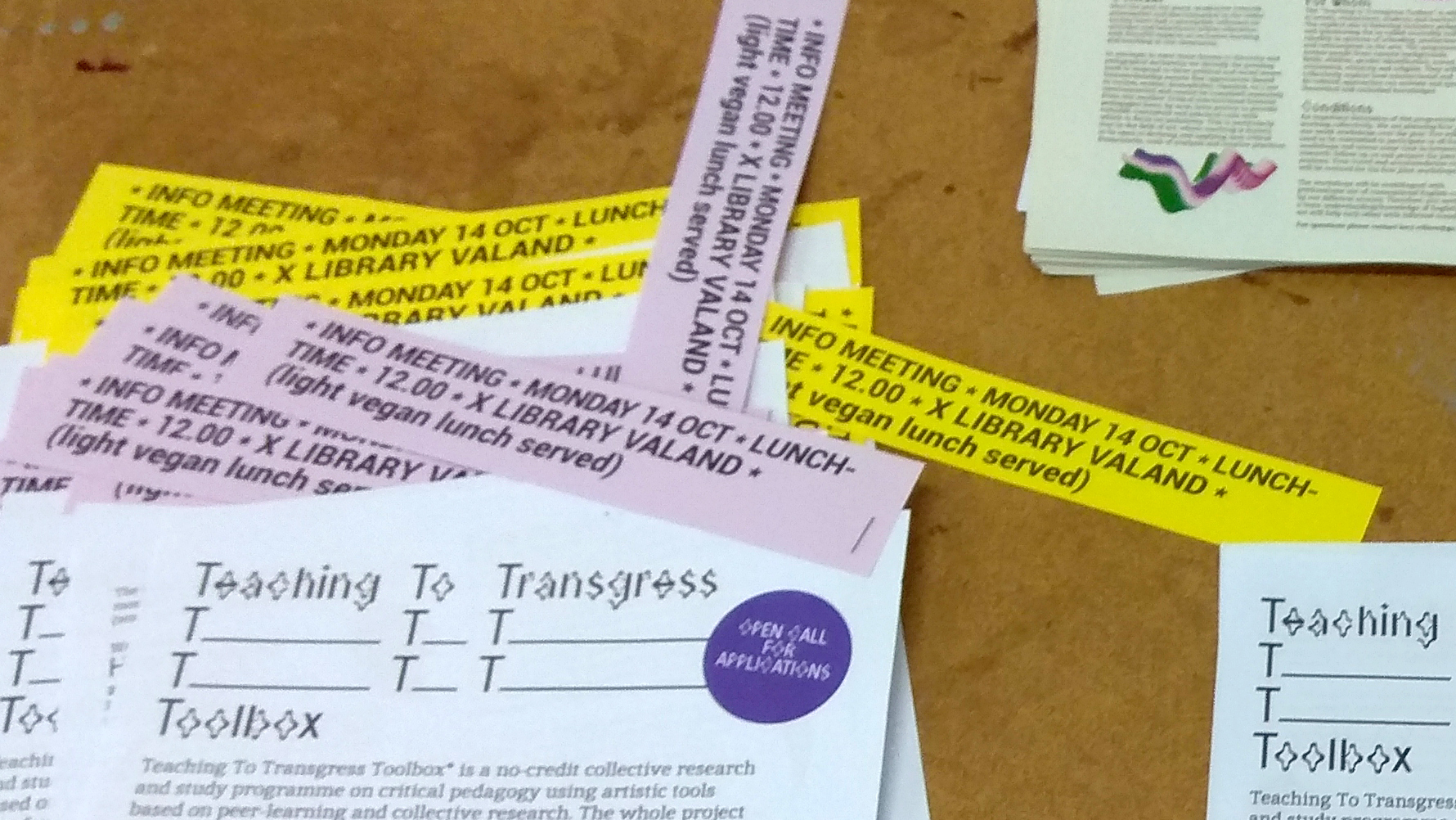Launching the “Call for Application”
In order to reach potential participants, the three partner schools launched jointly a “Call for Application” inviting artists, researchers, students, teachers, and administrators from various backgrounds, fields, abilities, gender identification, sexual orientation, ethnicity, and religion to collectively explore how intersectional and de-colonial approaches can activate and spread embodied and theoretical knowledges. The call described the schedule of the TTTT programme, the selection criteria and how to apply. It was circulated via posters, emails, and newsletters.
 Call for Applications PDF, English —
Call for Applications PDF, French
Call for Applications PDF, English —
Call for Applications PDF, French
How to apply
Acknowledging the limitations of normative selection processes based on artistic works the TTTToolbox team focused on applicants practice, since the programme was also questioning the division between “practice” (the process, the doing) and “artistic work” (the resulting object). To understand applicant's points of reference, the call asked for a “cartography of relations and affinities” and a short description why the applicant would like to join the programme outlining their motivations, expectations, and desires. This could take many forms, such as written text, recorded speech, a graphic novel, etc. Applications were welcome in English (any level) and/or in the official language of the participating school (French at erg and ISBA, or Swedish at HDK/Valand).
 How to Apply to the TTTT programme, part of the Call for applications, published in October 2019.
How to Apply to the TTTT programme, part of the Call for applications, published in October 2019.
Selecting participants
October–November 2019
 Selecting participants @erg
Selecting participants @erg
@erg
From the 37 applications erg received, the initial planning team (X. Gorgol, Loraine Furter, Camille Circlude) shortlisted 12 applicants on the basis of need and benefit. The objective was to select people who would benefit from this programme, for whom TTTToolbox would be an opportunity to create a network for their future projects. For example, applications from people who had already graduated and were well on their career path or were already connected to a feminist network, were put aside. Also, non-white people were clearly favoured in having access to this programme.
The erg team experimented with a collective interview situation to question the normative selection process itself. The rationale was to not make a choice from above, but to come collectively to a decision for whom this programme was most urgent. This collective process of negotiation and exchange could already be seen as a first TTTToolbox event, a moment that could be valuable even for the people that did not get into the programme. This way they could still be connected to the participants and stay in touch to form a wider network.
In a two-hours go-round, each person introduced themselves, specifying why they wanted to participate in the programme. This was followed by a collective writing exercise, in which the group mapped out — on sheets of paper — the urgent, intersectional, and decolonial issues that they hoped the programme would address. This moment of exchange was an important starting point for the group. The erg team paid attention to a set of qualities among the participants in this exercise that helped them to finalize the selection:
- The mapping of topics resonated with the topics to be addressed during the programme
- Ability to develop and grow in a group setting, including exchanges
- Suitability of this programme for the person's personal development and career
- Importance/need of being able to connect to a support network on these issues
- Minimum level of English to facilitate exchanges beyond national languages with participants from other schools
After this collective interview situation, some candidates with an insight into the issues at stake within the programme withdrew their application to make space for people who would benefit most. For the final selection, the erg team used a point system according to the criteria detailed above.
Those who did not get a place on the programme were invited to become part of the extended TTTToolbox network, to keep in touch with the team and were invited to the public events throughout the programme.
 Info Meeting with vegan lunch @HDK-Valand
Info Meeting with vegan lunch @HDK-Valand
@HDK-Valand
From the 16 application received by HDK-Valand in Gothenburg, ten were shortlisted and invited for interview. These were conducted as individual conversations with a panel of three members of the initial group that kickstarted the project in Sweden. The initial planning team consisted of teachers, researchers, and administrators. (André Alves, Rose Brander, MC Coble, Andreas Engman, Eva Weinmayr).
For both the shortlist and for the interview/conversation, selected criteria were used:
- Submitted what is asked for in the call formally.
- Experience and interest in working collectively.
- Motivation. What can they bring to the programme?
- Engagement with the topics of the programme (Previous experience, current questioning, new formulations-all valid).
- Contribution to the group as a whole. Looking for non-normative/majority representations and voices.
- Would the programme be good for the applicant at this stage of their life/work?
- Other: Something else that pops out that is interesting and fresh (Make a note of what this is.)
For the interview conversations, lots of care went into the choice of room and seating arrangements, timing, and possible language barriers. (In the shortlist, native tongues were Spanish, French, German, Swedish, Icelandic, English.) An entire day was scheduled for the conversations, in which the team asked everyone the same questions and explained the structure of the programme (four one-week worksessions over the year), the expected time commitment and workload (five days per semester developing workshops/outputs, interviews, public events, and three days meeting time per semester—besides the four intensive weeks), and the planned online platform with the aim to publish results (so-called Intellectual Outputs).
The questions the HDK-Valand team asked were:
- What are to you the most appealing and important aspects of the project?
- What do you think you can contribute to the project?
- How will you negotiate your time commitments in your study programme with the requests of TTTT?
- What are you curious to find out during the programme, or take away from it?
- Can you talk about any experience you’ve had in non-formal education or self-organized educational settings?
- Please think of an example of a conflict when working collectively, and how was it sorted.
- What are your expectations of the project as a whole?
- If we select you, could you commit to the project now?
@ISBA
At ISBA a group of three (two teachers, one former student) made the selection with the aim to select people from different backgrounds with an interest in critical pedagogies in art education. ISBA was guided by three criteria: They were focusing on applicants from marginalized communities. They were looking for interest in practising these critical pedagogies in workshops with children or in social educational settings. And they were looking for a diversity of view points and approaches to the proposed programme.
